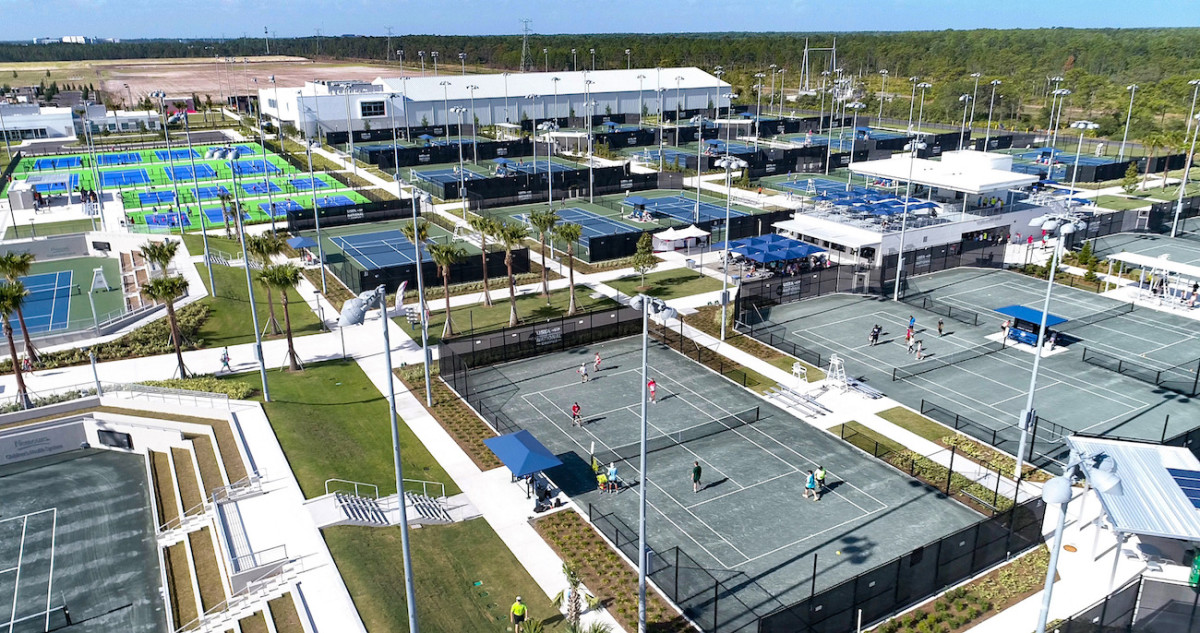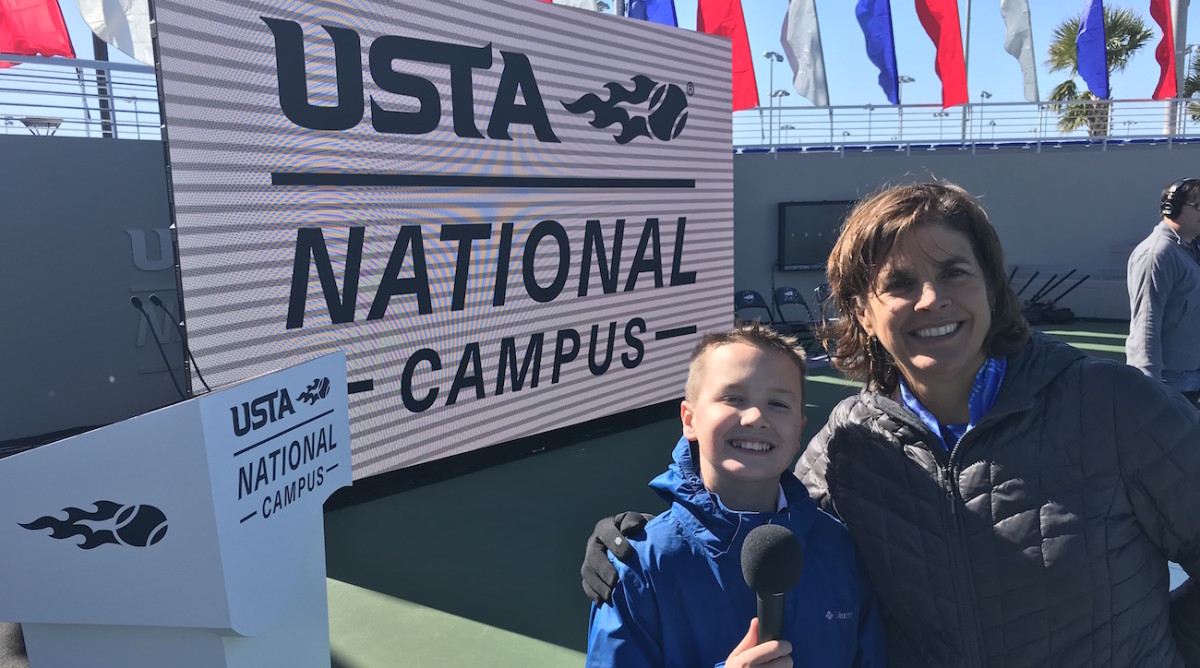USTA National Campus Celebrates One-Year Anniversary

Earlier this year, the United States Tennis Association (USTA) celebrated the one-year anniversary of the grand opening of the USTA National Campus in Orlando, Florida. The USTA is the national governing body for the sport of tennis and the leader in promoting and developing the sport’s growth on every level in the U.S.
The center in Orlando, called the Home of American Tennis, has 100 lighted tennis courts spread over 64 acres and was built in Orlando because of its proximity to an international airport (15 minutes away) and “typically warmer weather conditions,” laughed USTA’s chairman of the board and president Katrina Adams on an unseasonably cold day in Florida.
The National Campus is intended to support players at all levels, from youth and recreational players up through and including aspiring professionals.
In its first year, the center has had 200,000 players reserve nearly 150,000 hours of court time. But perhaps the biggest benefit to creating a central gathering place for American tennis has been the ability to centralize the USTA’s player development program, which is also a crucial part of the USTA’s mission.

“Our role in developing elite tennis players is to provide the best possible resources that they need to be the best player that they can,” said Adams. “We have this facility here at the USTA National Campus with our player development division to provide them the best coaching, best training, best fitness activity—both physical and mental—to be the best that they can be.”
Jim Courier, a four-time Grand Slam singles champion and former World No. 1, was on-hand for the event. Courier sees the centralization of the USTA’s training as an improvement from when he was competing as a 15-year-old member of the national team, when top players would come together primarily to compete in international competitions.
“Now there is more of a concerted effort for the USTA to help the local coaches and players to come here to train to and get the benefits of what the USTA can provide to them and not lose the connection to their home coaches,” he said.
Courier also sees this new organizational structure paying dividends, adding, “We have a lot of really talented American players—not just our top ranked players—but also some of our younger players coming up who are going to get some new chances in the future.”

Gigi Fernandez, two-time Olympic gold medalist and 17-time Grand Slam doubles champion, was also in attendance and agrees that the National Campus and improved cooperation at all levels will help contribute to creating a pipeline of elite players. “Now [the USTA] has a more unified approach,” she said. “They have one person overseeing all of player development. All of the players of this generation will come train here. It’s friendlier because people are training together and practicing together and encouraging each other, as opposed to always competing against each other.”
And while player development is only one part of the USTA’s mission, Adams feels that the health of American tennis improves when there are role models succeeding at the highest level of the game. “It is important to see an American winning at every possible opportunity so that kids can aspire to be that champion.”
Photographs by (from top): USTA (2); Michael Nichols
